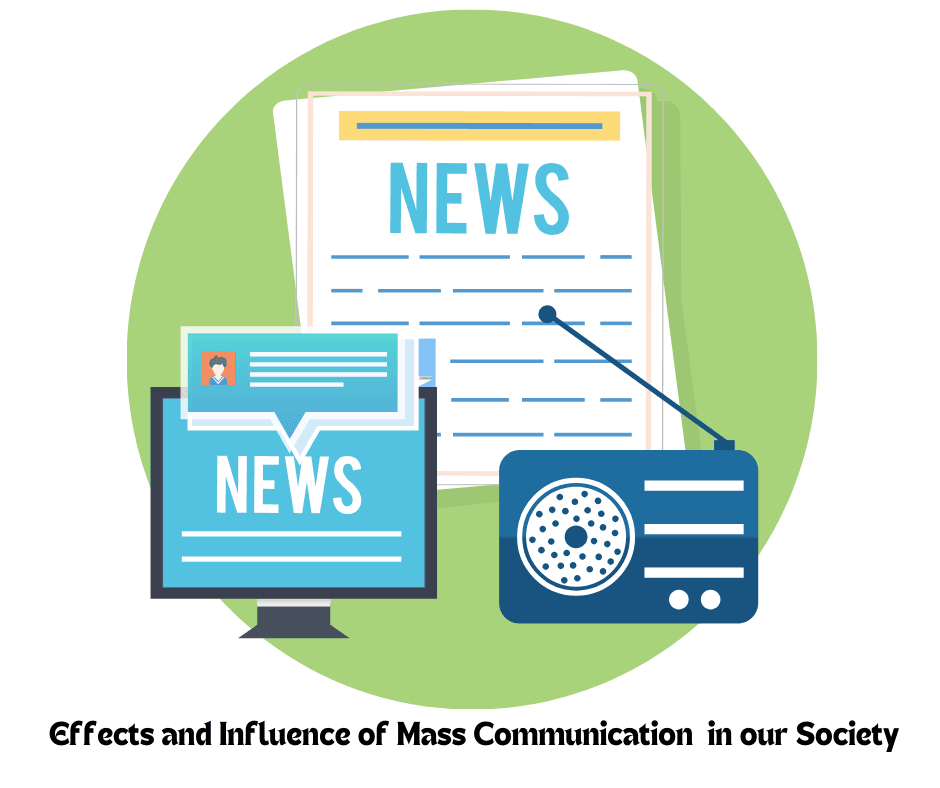Through mass media, we get public tax messages that place awareness. The founder of media should be in the formation of patriotism, science-mindedness, and prejudice-free youth. A major function of mass media is positive social change. In this case, it should be judged how much it deviates or how successful it is. Today, suddenly opening the door to cable network entertainment to all quality decades has several negative effects. In addition to this, additional advertising, magic, feasting, and excessive nudity show the effect of television is increasing a lot. Public opinion is against all this. Therefore, it is necessary to look at all these issues to facilitate the development of the country.
Features of Public Notice:
To better understand or analyze mass communication, David McQuill in 1969 mentioned seven characteristics. These are:
1) Mass communication requires complex organizational conditions.
2) Mass notification should be done for a large audience;
3) To have an open discussion with the public, this will reach a single person;
4) The character of the reader-audience will be more diverse. There will be no possibility of any compromise in their structure, culture, or characteristics.
5) There will be direct correspondence between the informant and the reader-audience;
6) The reader-audience is a fundamental group within the modern social system, brought together by a single interest to exhibit similar ritual practices or to be celebrated in the same work. These characters in public relations have made him more connected with society.
Mass communication has increased the standard of living of people. It’s thought-provoking. If its role in the development of people is more public-oriented, public information can be called a friend of people.

Let us now discuss the necessity of mass communication and mass media:
A) Information delivery: The main function of mass media or public information is to convey information to the public. Mass media is doing a great job of collecting and disseminating all kinds of news every day. People expect a lot from them. Objectivity of information will help them maintain credibility.
B) Education: Helping to spread mass education is one of the functions of mass communication. The opportunity to learn about the world comes through the media. Public opinion has the responsibility of bringing people together on various issues of economy, social policy, science, and technology. Especially today, when people have become dependent on mass media due to social isolation.
C) Entertainment: Among the three main functions of mass communication, entertainment is the mainstay of mass media today. Radio and TV give pleasure. Drama, music, dance, or entertainment cannot be denied. But entertainment should be healthy. This prayer, which will make people sophisticated and tasteful, is for everyone.
D) Social responsibility: Publicity will make people social policy. Media has to play a constructive role by creating social values with the help of mass communication.
E)Political knowledge: Mass media increases the political knowledge of common people. By showing the good and bad aspects of the governance structure of the country, the political parties make people aware of democracy and politics. This strengthens the fear of the country. The source of power lies within the mass media.
Mass communication has many advantages, such as the ability to reach large audiences quickly, but it also comes with several disadvantages:
1. Loss of Personalization: Mass communication often lacks personalization, leading to messages that may not resonate with all audience segments. People from different backgrounds, cultures, and demographics may interpret or respond to the message differently.
2. Information Overload: In the mass media and digital communication era, people are bombarded with a vast amount of information. This can overwhelm individuals, leading to difficulty in distinguishing important information from irrelevant content.
3. Spread of Misinformation: Mass communication platforms, especially social media, can become a breeding ground for the spread of false information, rumors, and fake news, often with serious consequences.
4. Reduced Critical Thinking: Continuous exposure to one-sided or biased media content can lead to reduced critical thinking among audiences. People may accept information at face value without questioning its accuracy or considering alternative viewpoints.
5. Homogenization of Culture: Global mass communication often promotes dominant cultural values and norms, leading to cultural homogenization. Smaller, local cultures and traditions may be overshadowed or forgotten in favor of mainstream global culture.
6. Political and Corporate Influence: Many mass communication channels, such as television and major news outlets, are owned by large corporations or influenced by political agendas. This can lead to biased reporting or a lack of objectivity, as media outlets may prioritize their interests over the public good.
7. Invasive Advertising: Mass communication is often used as a vehicle for advertising, which can be intrusive. Excessive advertising can lead to consumerism and create pressure on individuals to conform to societal expectations or purchase products they may not need.
8. Loss of Interactivity: Unlike interpersonal communication, mass communication is typically one-way, with limited opportunity for immediate feedback. This lack of interactivity can make it difficult to gauge audience reactions in real time.
9. Digital Divide: Not everyone has equal access to mass communication technologies, such as the internet, television, or radio. This creates a “digital divide,” where some groups, especially in rural or underdeveloped areas, are left out of important communication networks.
10. Oversimplification of Complex Issues: Mass media often reduces complex topics into simplified sound bites or catchy headlines, which can distort the nuances of important issues and leave audiences with an incomplete understanding of the subject matter.
Mass communication plays a crucial role in modern society by providing information, entertainment, and education to large audiences, influencing public opinion and cultural values. It has become essential in today’s interconnected world, allowing for the rapid spread of news, ideas, and innovations across vast geographical areas. However, while mass communication is important for global engagement, it also brings significant disadvantages, such as the spread of misinformation and the loss of personalized communication. These drawbacks highlight the limitations and potential negative effects of mass communication when not managed responsibly or with consideration for its impact on diverse populations.The standardization of culture, corporate and political influence, and the digital divide further emphasize the complexities and challenges inherent in mass communication systems. Understanding both the benefits and drawbacks of mass communication is vital for ensuring its responsible and inclusive use for the public good.



